Honey fungus: what is it and how to tackle it in your garden
We explain everything you need to know about honey fungus to protect your shrubs and trees
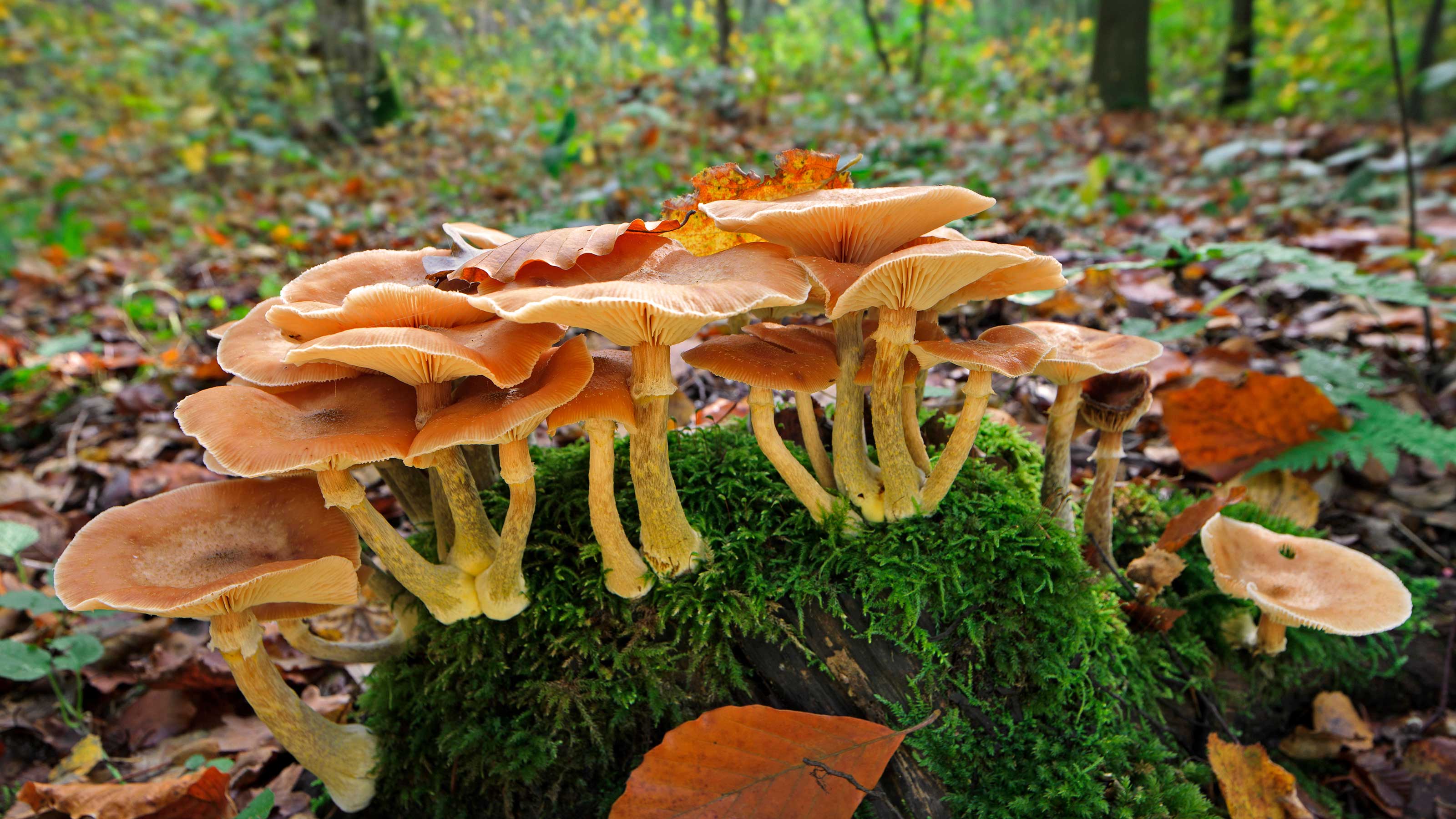

Have you ever heard of honey fungus? It's well worth getting the lowdown on this problem, so you can identify it quickly if it appears in your garden.
Honey fungus causes branches and roots to die back, and eventually kills backyard trees and shrubs. According to the RHS, it is 'the most destructive fungal disease in UK gardens.' If spotted, you'll definitely want to stop it in its tracks so it doesn't spread.
We've explained all you need to know to tackle this disease, so you can keep your precious plants protected.
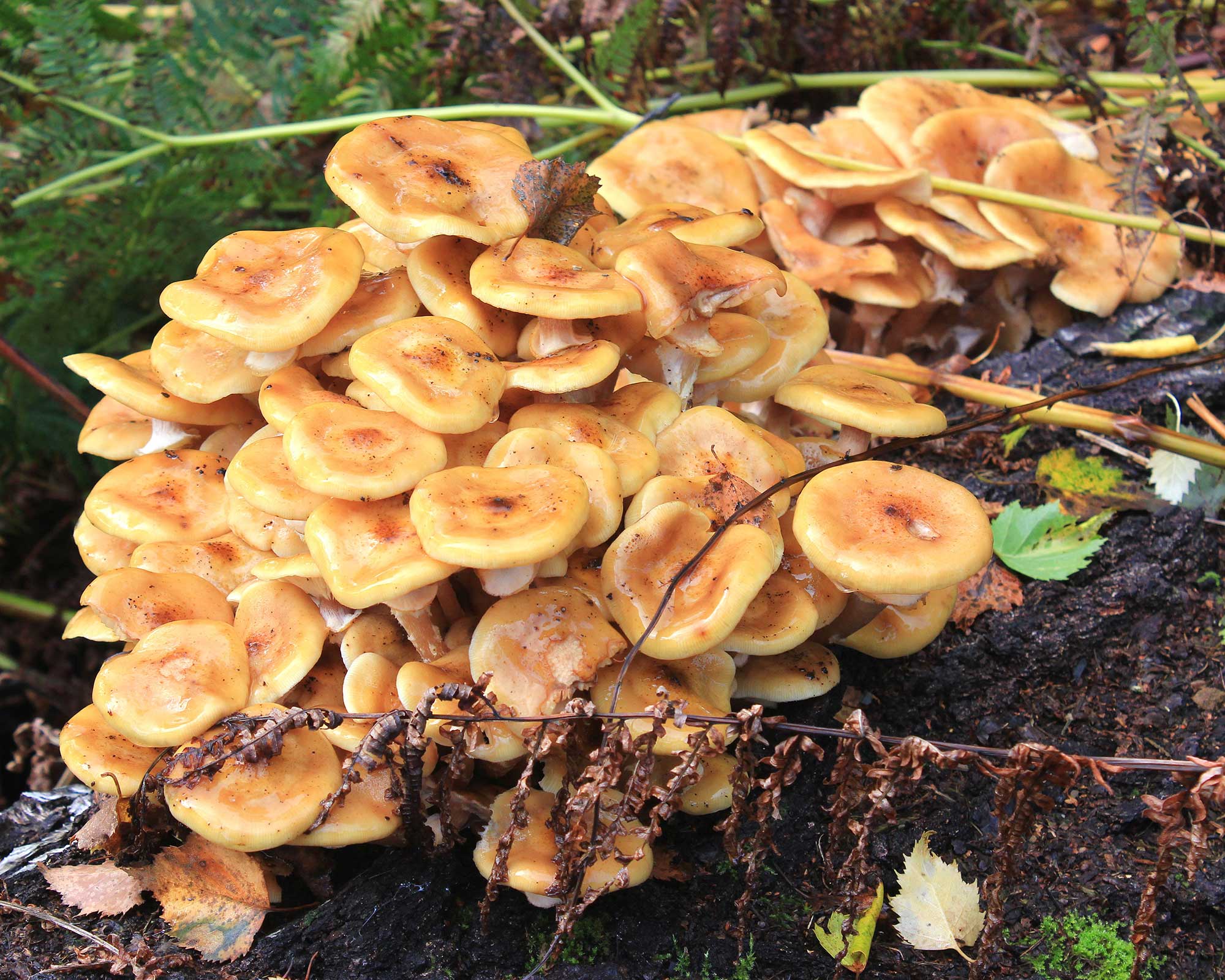
Yellow-colored mushrooms are a sign of honey fungus
What is honey fungus?
The name 'honey fungus' refers to a few different species of the Armillaria genus which kill many types of plants. 'It is characterized by the appearance of honey-hued toadstools and stretchy black bootlace-like rhizomorphs in the soil,' says John Negus of Amateur Gardening.

John has been a garden journalist for over 50 years. He has also written four books and delivered many talks on horticulture. He regularly answers readers' questions in Amateur Gardening magazine, including offering advice on plant problems and diseases such as honey fungus.
'This disease clogs the plant’s food and water canals, and causes shoots and roots to die,' John continues. Other symptoms include smaller leaves that are paler than normal, a failure to flower, and cracking of the bark, says the RHS.
You can check if your plants have been affected by exposing a sizeable root and removing a thin sliver of bark. If white mold is visible beneath the bark, combined with a mushroom-like smell, honey fungus is the culprit.
If no white mold is found but your plants seem to be suffering, another cause, such as root death, may be responsible. Check to see if the center of the roots are brown and dead to identify this potential problem.
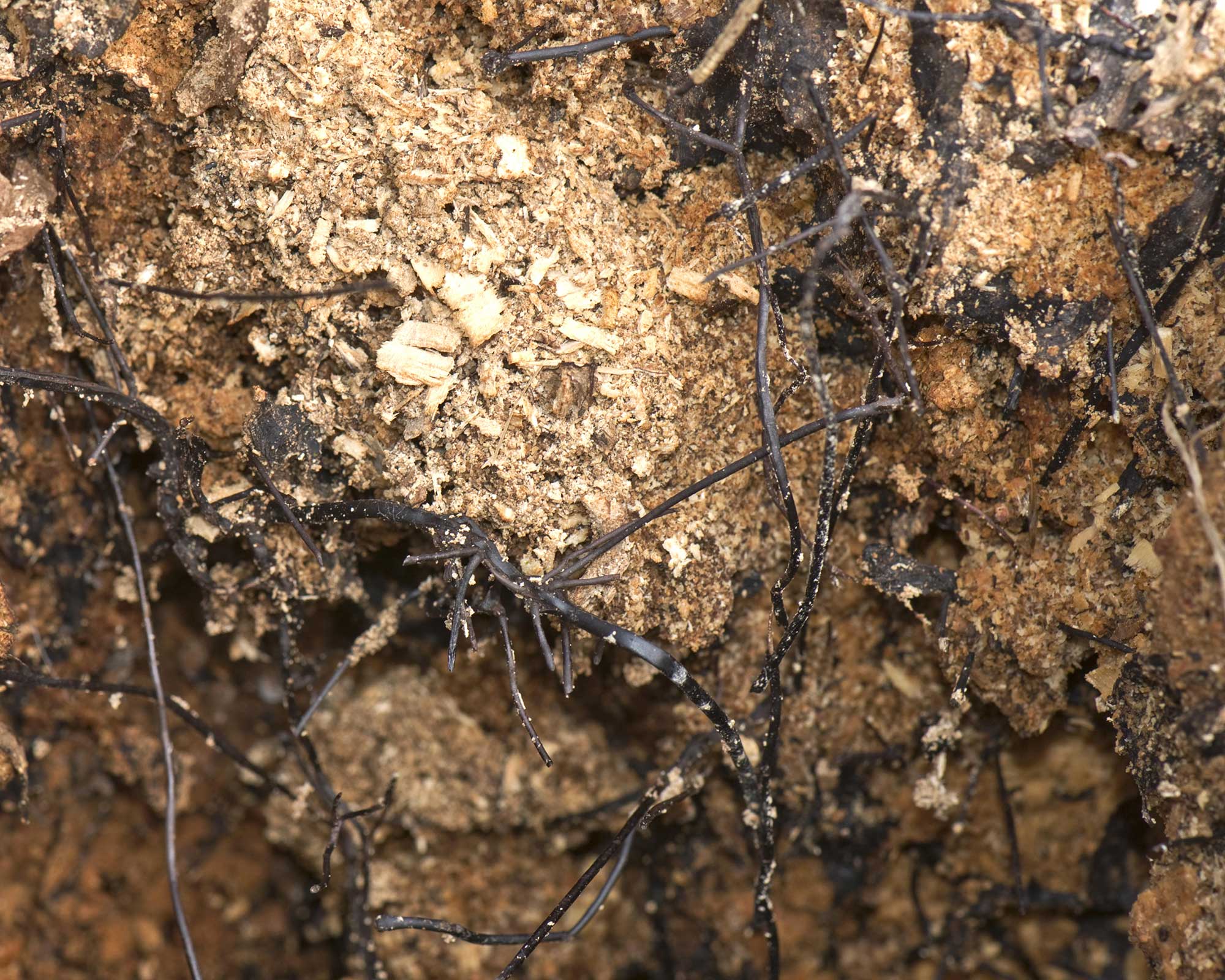
The rhizomorphs of honey fungus
What plants are susceptible to honey fungus?
Many trees, shrubs, and hedging plants are particularly susceptible to honey fungus. These include birches, willows, oaks, photinia, cotoneaster, and rhododendrons.
Some plants, such as pieris, pittosporum, and olive trees, are relatively resistant to the disease. Bamboo and Buxus sempervirens are also less commonly affected, although watch out for box blight with the latter.
It is possible to find honey fungus elsewhere in the garden, such as in pots of spring bulbs, although it won't harm them. To check, remove the compost when the bulbs have finished flowering and are becoming dormant, and tease through it looking for the telltale rhizomorphs. 'If found, bin or burn them,' says John. Avoid adding them to the compost heap as you could end up distributing them around the garden and endangering shrubs and trees.
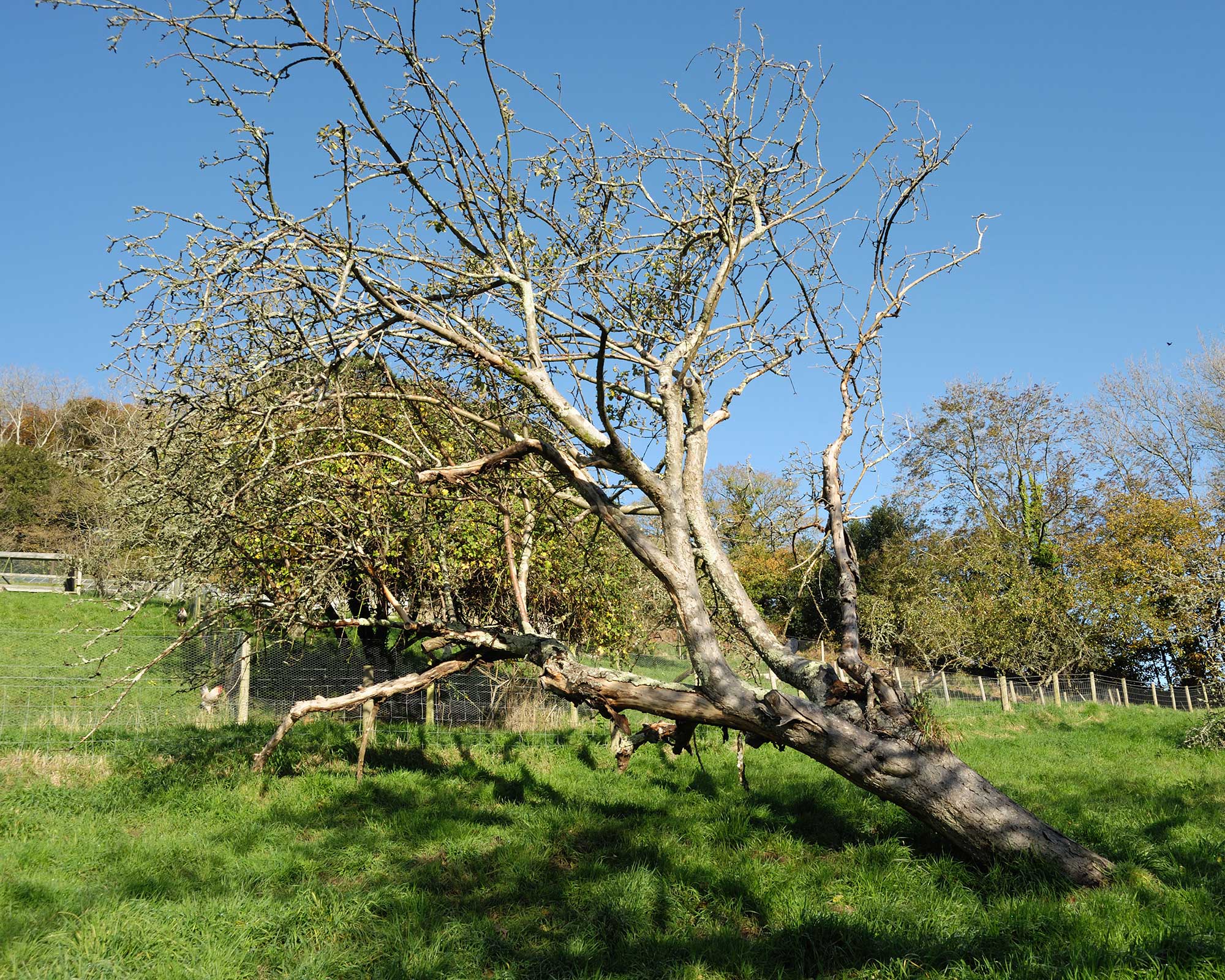
This tree has died due to honey fungus
How do you prevent honey fungus?
Honey fungus usually invades rotting tree or shrub stumps and then spreads to other woody plants, says John.
To try and avoid this from happening, when having a tree removed, do your best to remove the tree stump and as many roots as possible (even if this means hiring a professional).
If you do find honey fungus in your garden, it's important to stop it from spreading. When removing infected plants (see below), consider removing nearby plants that seem healthy, too. For instance, if one hedging plant is infected, it may be wise to take out the plants on either side as they have likely been affected via the roots, says the RHS.
Once the infected plants are removed, you could install a barrier made from an impermeable membrane around the area to stop any leftover fragments from spreading.
The RHS also suggests leaving the area 'fallow' – that is, starving it from nutrients for six months to a year – in an attempt to kill any remaining fungus. In the meantime, a gravel garden will prettify the otherwise bare space. Cover the area in weed-suppressing fabric before adding the stones, then arrange an assortment of potted plants for color and interest.
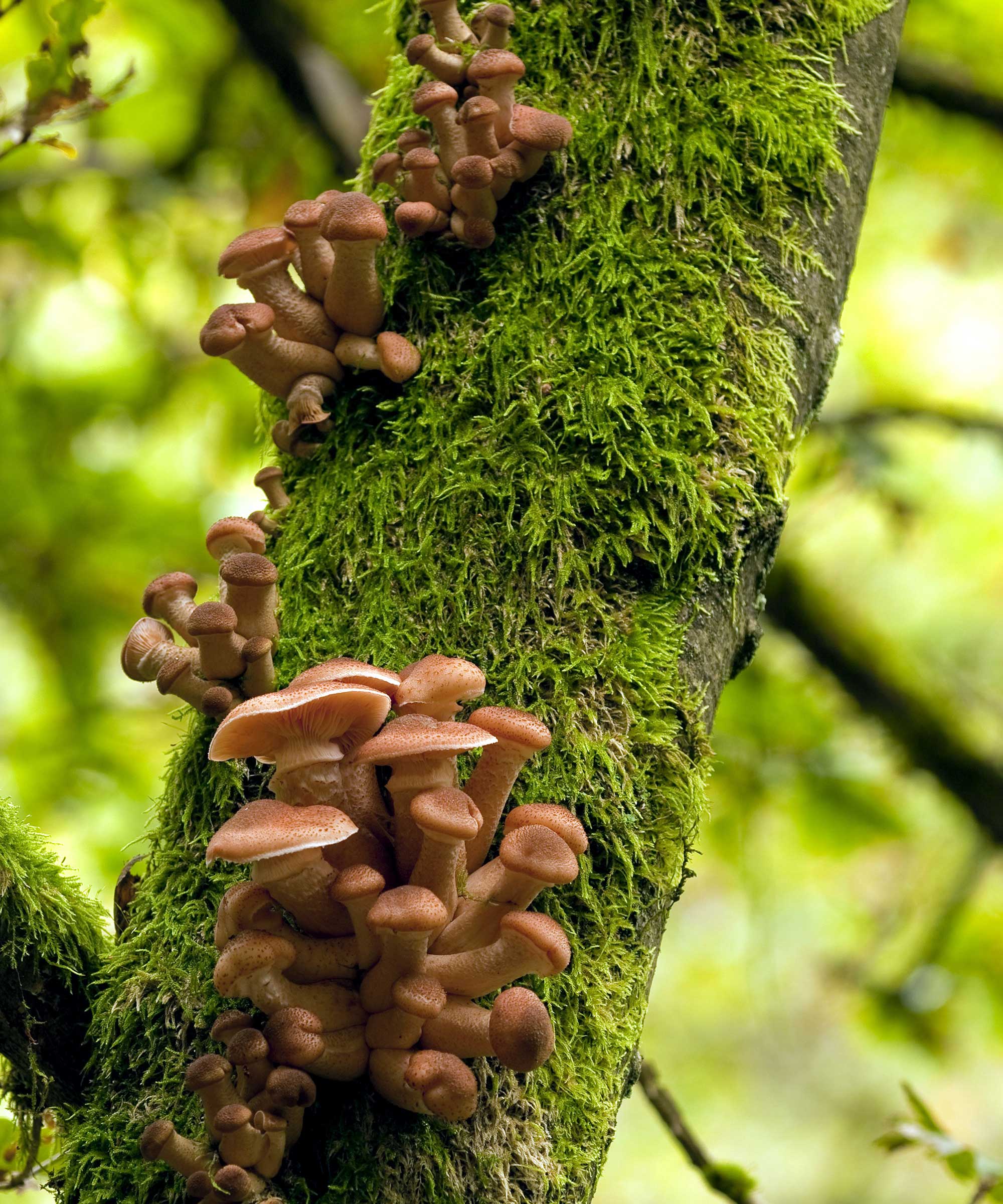
Honey fungus is sadly incurable
Can you treat honey fungus?
Sadly, honey fungus cannot be cured. Infected plants should be dug up and binned or burned – roots and all – the sooner, the better. 'Do not shred them and add them to the compost heap, because the humus you extract will be infected and contaminate the rest of the garden,' says John.
If digging them out seems like too much work, you can tackle them with a systemic herbicide first, such as Vitax SBK Brushwood Killer or Roundup Tree Stump & Root Killer (both available on Amazon) John continues. 'Simply cut back trees to 12in (30cm) from the ground and, with a sharp knife, make a "frill" of cuts in the bark and paint them with weedkiller. It will travel in the sap stream to kill the roots. When dead, stumps will loosen and can be easily removed.'
If you'd rather attempt to prolong your shrub or tree's life, you can try feeding it monthly from mid-spring to early fall with a balanced granular fertilizer and keep it well-watered in dry spells. Dead branches can also be pruned out. However, honey fungus will kill the plant eventually, and may spread to other nearby plants in the meantime.

The garden was always a big part of Holly's life growing up, as was the surrounding New Forest where she lived. Her appreciation for the great outdoors has only grown since then. She's been an allotment keeper, a professional gardener, and a botanical illustrator – plants are her passion.
